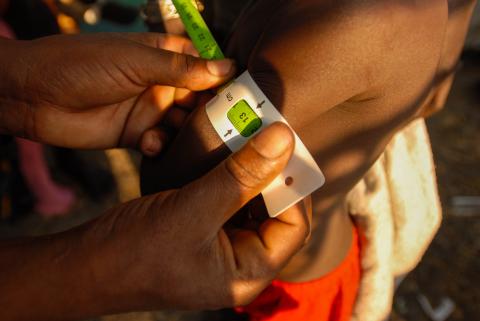Post-recovery relapse and a simplified protocol: A study of children in Mali
This is a summary of the following paper: Kangas S, Coulibaly I, Tausanovitch Z et al. (2023) Post-recovery relapse of children treated with a simplified, combined nutrition treatment protocol in Mali: A prospective cohort study. Nutrients, 15, 11. https://www.mdpi.com/2072-6643/15/11/2636
High relapse rates have been observed in children recovering from an episode of wasting, yet limited data are available on the incidence of relapse and its associated factors. At the same time, so-called 'simplified protocols' - which often incorporate a reduced ready-to-use therapeutic food (RUTF) dose - have shown promise in Mali, as well as other settings.1 In Mali, the relapse rate of children treated using a simplified and combined protocol is unknown. This prospective cohort study sought to quantify this by enrolling children treated with this regimen, exploring factors associated with relapse.
This study was nested within an ongoing effectiveness study implementing the simplified and combined protocol in 35 health areas within a health district of Nara, southwestern Mali. Within this, a random sample of 10 health areas was selected for study - which incorporated 10 health centres and 18 community health sites - with a total of 420 children included in the study. Eligibility was defined as any child in the selected health areas who had achieved recovery - classed as mid-upper arm circumference (MUAC) 125mm and no oedema for two consecutive measurements over two weeks - who was not planning on relocating during the study period and where there were no security risks to the study. Children were followed up at home fortnightly for six months.
The incidence of relapse into MUAC <125mm was high (26%), but was low (1.6%) for MUAC <115mm and/or oedema. This is higher than comparable studies, yet explainable by the extended follow-up period. The incidence rate of relapse was 4.8 per 100 child months. Lower age, lower anthropometry at admission and discharge, and higher number of illness episodes was predictive of relapse. Having a vaccination card, using an improved water source, having agriculture as a main source of income, and increases in caregiver workload were protective.
Dietary pattern was not found to predict relapse in this study, which runs contrary to a priori understanding - that diet is an underlying cause of malnutrition. This may indicate that, for this cohort, malnutrition is attributable more to disease than dietary intake, which is supported by the strong predictive value that illness episodes had on relapse incidence in this setting. This finding may be confounded by very poor dietary diversity observed across the cohort, which could mask dietary intake as a predictor of relapse given this homogeneity.
Information bias may have been present in this study as some measures were systematically incomplete for all children. This was mitigated with imputation (adding replacement data) (e.g., for height). Investigating seasonal differences in relapse were also beyond the scope of this study design, although seasonal effects are unlikely to be specific to relapse incidence but rather associated with malnutrition incidence in general. A lack of control group rules out investigation of the role of simplified protocols in relapse. However, the study incorporated a robust methodology, outlining the caveats of the findings in detail, allowing for effective conclusions to be made from this work. Given the relatively high relapse rate, the authors conclude:
"Discharge criteria may need to be reconsidered, either by expanding the MUAC criteria or adding weight-for-age, in order to allow for a more sustained recovery from malnutrition."


